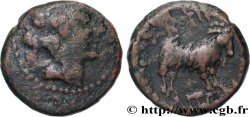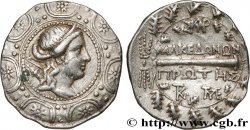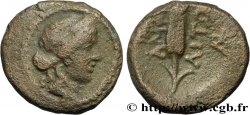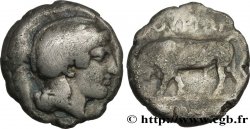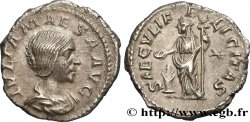v18_0060 - MACEDONIA - AMFIPOLIS Tétradrachme stéphanophore
MONNAIES 18 (2003)
起拍价 : 950.00 €
估价 : 1 800.00 €
竞价记录 : 2 460.00 €
出价数量 : 9
最高出价 : 2 915.00 €
起拍价 : 950.00 €
估价 : 1 800.00 €
竞价记录 : 2 460.00 €
出价数量 : 9
最高出价 : 2 915.00 €
种类 Tétradrachme stéphanophore
日期: c. 148-147 AC.
铸币厂名称/城市 Macédoine, Amphipolis
材质 silver
直径 29,5 mm
模子方针 3 h.
重量 16,74 g.
稀少度 R2
发行人: 2e
关于品相的说明
Exemplaire de qualité exceptionnelle pour ce type de monnayage avec une extraordinaire patine de médaillier à reflets gris bleutés, mordorés au revers. Revers de toute beauté, parfaitement centré
出版目录中的项代码 :
家谱
Cet exemplaire provient d’une vieille collection des années 30
正面
正面的文字 ANÉPIGRAPHE.
正面的说明书 Buste diadèmé et drapé d'Artémis Tauropolos à droite, l'arc et le carquois sur l'épaule, placé au centre d'un bouclier macédonien orné d'étoiles.
背面
背面的文字 LEG/.
背面的说明书 de chaque côté d'une massue ; au-dessus, main tenant un rameau d’olivier ; au-dessous, un monogramme ; le tout dans une couronne de chêne fermée par un foudre.
背面铭文 MAKEDONWN
评论
Le seul autre exemplaire connu avec ce monogramme provient de la vente de la liste Ratto 6 (1922), n° 1305, de la vente Ratto du 4 avril 1927, n° 769, de la vente Baranowsky du 25 février 1931, n° 460 et de la liste Ratto 14 (1935), n° 1618. Il est de mêmes coins que notre tétradrachme, celui-ci étant en meilleur état. L’axe des coins pourrait être à 6 heures, la massue étant alors placée verticalement.
The only other known example with this monogram comes from the sale of Ratto list 6 (1922), no. 1305, from the Ratto sale of April 4, 1927, no. 769, from the Baranowsky sale of February 25, 1931, no. 460 and from the Ratto list 14 (1935), no. 1618. It has the same dies as our tetradrachm, the latter being in better condition. The die axis could be at 6 o'clock, the club then being placed vertically
The only other known example with this monogram comes from the sale of Ratto list 6 (1922), no. 1305, from the Ratto sale of April 4, 1927, no. 769, from the Baranowsky sale of February 25, 1931, no. 460 and from the Ratto list 14 (1935), no. 1618. It has the same dies as our tetradrachm, the latter being in better condition. The die axis could be at 6 o'clock, the club then being placed vertically







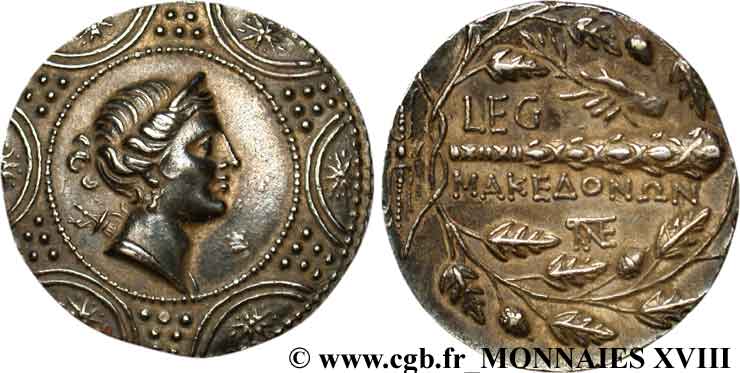
 对产品描述纠错
对产品描述纠错 打印
打印 分享我的选择
分享我的选择 提问
提问 Consign / sell
Consign / sell
 产品介绍
产品介绍
